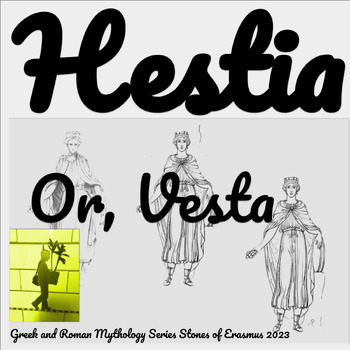In the bustling city of Ephesus, amid the bustling marketplaces and thriving harbors, stood the magnificent Temple of Artemis. One of the Seven Wonders of the Ancient World, this sacred edifice was a testament to the divine Artemis (or Diana), the revered Olympian goddess of the moon and the hunt. A deity of nature and wildlife, her influence, much like her arrows, stretched far and wide. Today, let us rekindle the flickering flames of ancient fires and bring to life the enigmatic goddess and her magnificent temple.
As an educator who designs digital downloads, I've found that the allure of Artemis provides a rich, captivating context for teaching and learning. With this in mind, I've created an engaging, resource-packed digital download that uncovers the mysteries surrounding Artemis and her legendary temple.
.png) |
| Take a Sneak Peak at the Artemis (Or, Diana) Educational Digital Download |
The Quintessence of Artemis
With this comprehensive resource, navigate the mythic landscape of Artemis, or, as the Romans called her, Diana, tracing her origins from a probable river or vegetation goddess to the celestial twin of Apollo. The fascinating intricacies of her cultic status offer fertile ground for intriguing discussions and insights.
An Array of Learning Tools
The resource comes with a plethora of pedagogical tools designed to foster a deep understanding of Artemis and her world. It includes a three-day lesson calendar complete with teacher’s notes, an anchor chart of key characters and places, and student-friendly reading cards exploring Artemis at Ephesus and her representations in literature and art.
The 18-count question bank ensures comprehensive topic coverage and encourages critical thinking. A custom note-taking template fosters active engagement, while the Frayer Model Vocabulary Cards help students visually explore and grasp complex terms and ideas.
Evaluating Understanding and Deepening Knowledge
Exit tickets, collected at the end of each lesson, provide immediate feedback on students’ understanding. As a summative assessment, a writing activity encourages students to delve deeper into the characteristics and symbolism of Artemis, particularly focusing on her as a representation of female power, nature, and fertility.
The included further reading list isn't just a bibliography—it's a portal for deeper exploration and individual or group projects. By assigning different sources to students, you can create an engaging space where learning expands beyond the confines of the classroom.
Fitting Mythology into the Middle and High School English Language Arts Curriculum
Designed with high school students in mind, this Artemis resource fits seamlessly into an English Language Arts Mythology unit. It provides an opportunity to discuss female goddesses, the role of women in society, and fertility symbolism in art and literature.
The resource stands strong as an independent lesson but can also be paired with a broader unit on early Greek myths, primordial stories, Percy Jackson and the Lightning Thief, Robert Graves's Greek Myths, Ovid’s Metamorphoses, or Edith Hamilton’s Mythology.
So, take your students on a mesmerizing journey into the realm of Artemis—a world where gods, goddesses, and the intricacies of the ancient Mediterranean world come to life. Explore more mythology-related resources at Stones of Erasmus, © 2023 stonesoferasmus.com.






